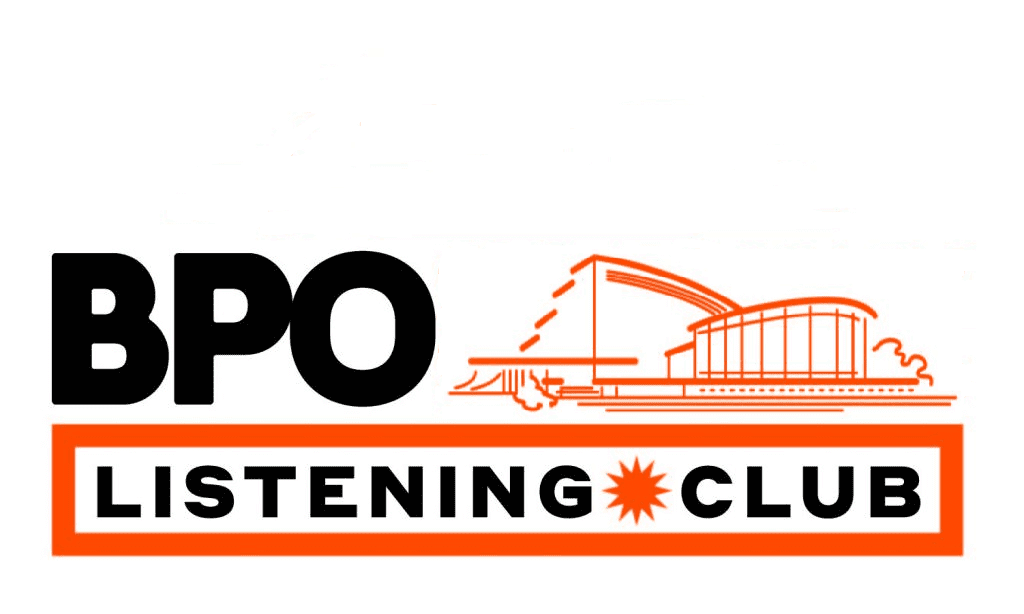
PIAZZOLLA Las Cuatro Estaciones Porteñas (The Four Seasons of Buenos Aires)
performed by the Royal Concertgebouw Orchestra
PUCCINI Crisantemi
performed by the Enso String Quartet
BANTOCK Celtic Symphony
performed by the London Promenade Orchestra
Abstract
adjective
/abˈstrakt,ˈabˌstrakt/
-
1.
existing in thought or as an idea but not having a physical or concrete existence.
Last week I wrote about musical conversations, highlighting music’s unique capacity for ideas to occur simultaneously through counterpoint. It’s this idea of communication through music that I want to expand upon this week.
Reduced to its simplest function, music is a way of communicating. Again, it’s a lot like spoken language: ideas travel from one person to another, but in a different format. Just like I am writing this guide to communicate my ideas to you, a composer writes a piece of music to communicate with whomever listens to their music.
But, let’s not kid ourselves: a piece of writing and a piece of music could never communicate exactly the same idea to a reader or listener. There is no translator that can take these paragraphs and convert them into an equivalent musical version. If music, then, cannot replicate verbatim the words I’m currently writing, then what kind of communication is music capable of?
I want you to think about a song that means a lot to you. I don’t want you to limit yourself to classical music – in fact, I’d prefer you think of a song outside of the classical realm. Ask yourself: why do you like it? What does it mean to you? How does it make you feel?
The answers to those questions is the kind of communication that music deals in. Music communicates directly with our feelings and emotions – it transcends literal speech. An example: imagine that I’m telling you that I’m feeling sad today. The sentence “I’m feeling sad today” gives you a very basic amount of information – it’s accurate, simple, and effective. I could instead write a piece of music about my sadness that would give you deeper understanding of what my sadness feels like than what the sentence gave you.
Here’s the weird part about it though: while that music would make you empathize with my sadness more, the message isn’t universally clear. This is perhaps the biggest difference between music and language. How you interpret my music about sadness is going to be different from your peers – while most everyone would interpret it as sad, each of us has our own way of understanding that emotion. This is the abstract quality of music. Music doesn’t communicate using clear, “concrete” ideas, but rather hints at broader themes, leaving it up to you to interpret them.
Ok, I said all that just to set up this next point: there are times when composers decide to add an external story or idea to their music in order to give it a clearer meaning for the listener. Music like this is loosely called “program music”. The idea can be small, like giving a symphony the title “Eroica”, or big, like the score to “Star Wars”. This makes a big difference to how you listen to music – instead of hearing abstract ideas, you have an actual frame of reference to help you understand it. With an “Eroica” symphony, you’d listen to that with the idea of heroes as reference; with “Star Wars”, you couldn’t listen to that without thinking about the force, jedis, etc.
Pairing music with external ideas changes the way you perceive both the music and the idea it’s paired with. It’s easy to understand this when you look at the inverse: external music paired with the same film. Here’s a video that takes the same video clip and pairs it with different music. I think it highlights so effectively this power of pairing music with an idea, and how the result becomes greater than the sum of its parts.
This week’s concert is comprised entirely of program music. It begins with a familiar title, The Four Seasons, but is far from the Vivaldi rendition that you heard in the first week. A piece like this is program music on two fronts: it not only references the four seasons throughout the year, but also references the original by Vivaldi. You can think of it along the lines of a remade film, like Beauty and the Beast, or a remade video game like Final Fantasy VII Remake. Puccini’s Crisantemi was written for the death of a friend, and the title refers to chrysanthemums, a flower that represents mourning. The concert ends with Bantock’s Celtic Symphony, a title that I think is rather self-explanatory. Compared to the rest of the program, however, a title like this perhaps provides the smallest amount of information for the listener, leaving us to find the Celtic sounds ourselves.
Discussion Questions:
- What are some of your favorite instances of programmatic music? If you’re not familiar with the classical repertoire, share one of your favorite film scores and describe why it makes the film what it is.
- These days, program music is actually the norm. Most popular music is titled and has lyrics surrounding a certain theme. Is there any music you’re familiar with that has either no lyrics or a very non-descriptive title?
- Sometimes in film, video games, or other multimedia, a song is used that wasn’t originally composed for that medium. An example would be using Led Zeppelin’s Stairway to Heaven in a contemporary film. Even though that song wasn’t written for that purpose, it can sometimes be incredibly powerful. Share an instance of this and describe how it heightens the effect of the film/video game.